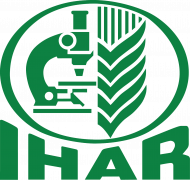Abstract
A field experiment was conducted to assess the effect of straw mulching and irrigation scheduling on water balance, economics and energetics of potato during 2013–2014 and 2014–2015. The experiment was laid out in a split plot design with mulch levels (no mulch and mulch 6.25 t ha−1) in the main plots and four irrigation schedules {ridge planting furrow irrigation (RPFI), bed planting furrow irrigation (BPFI), ridge planting drip irrigation (RPDI) and bed planting drip irrigation (BPDI)} in the subplots. Straw mulching resulted in 19.0% higher potato tuber yield than no mulch as a result of 36.2 mm higher transpiration and 44.2 mm lower soil evaporation. Energy productivity (EP) and energy use efficiency (EUE) were also significantly higher with straw mulch than no mulch with US$498 ha−1 higher net returns in pooled data of both years. Drip irrigation of beds and ridges resulted in 34.9% and 26.4% higher tuber yields, respectively, than furrow irrigation along with savings of 23.3 and 53.3 mm irrigation water, respectively. Seasonal transpiration was 31.0 and 31.7% higher in ridge- and bed-planted drip-irrigated crops, respectively, than furrow-irrigated crops in pooled data. Apparent and real water productivities were significantly higher in drip irrigated crops compared to furrow irrigated crops. RPDI and BPDI crops gave US$612 and US$876 ha−1 higher net returns with 35.7 and 28.8% higher EUE than RPFI and BPFI, respectively.













